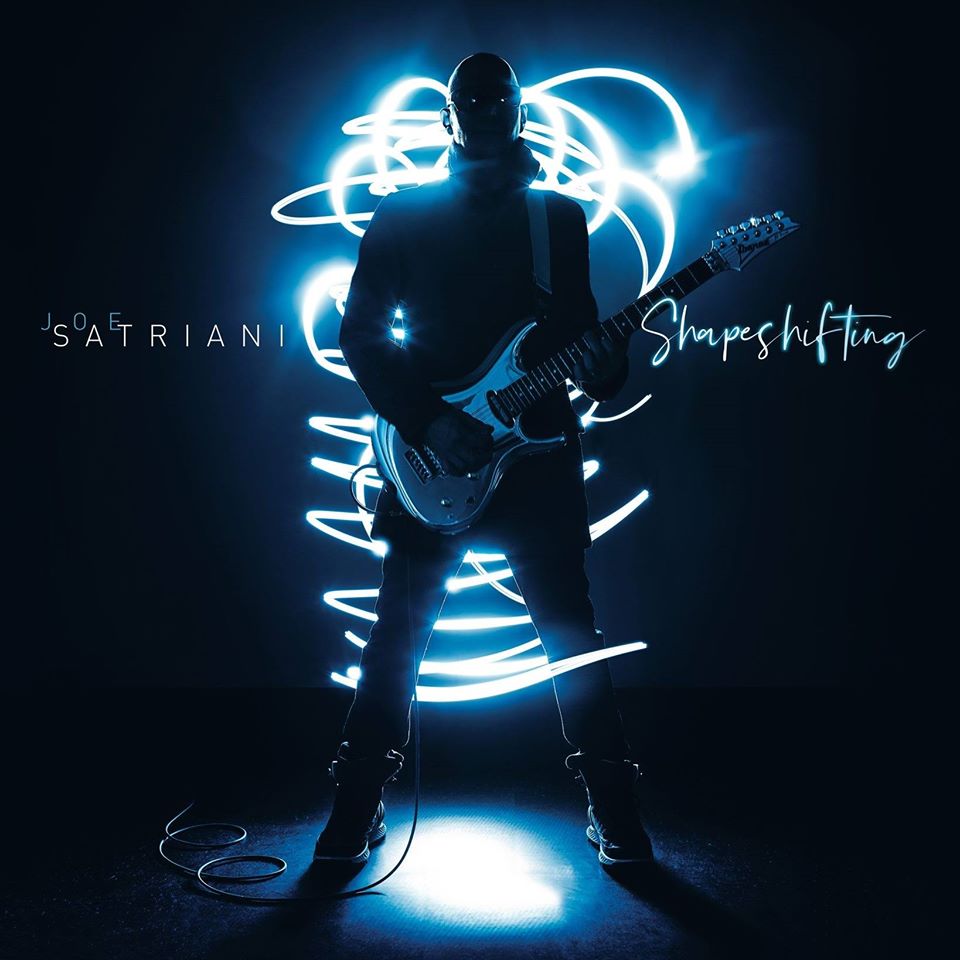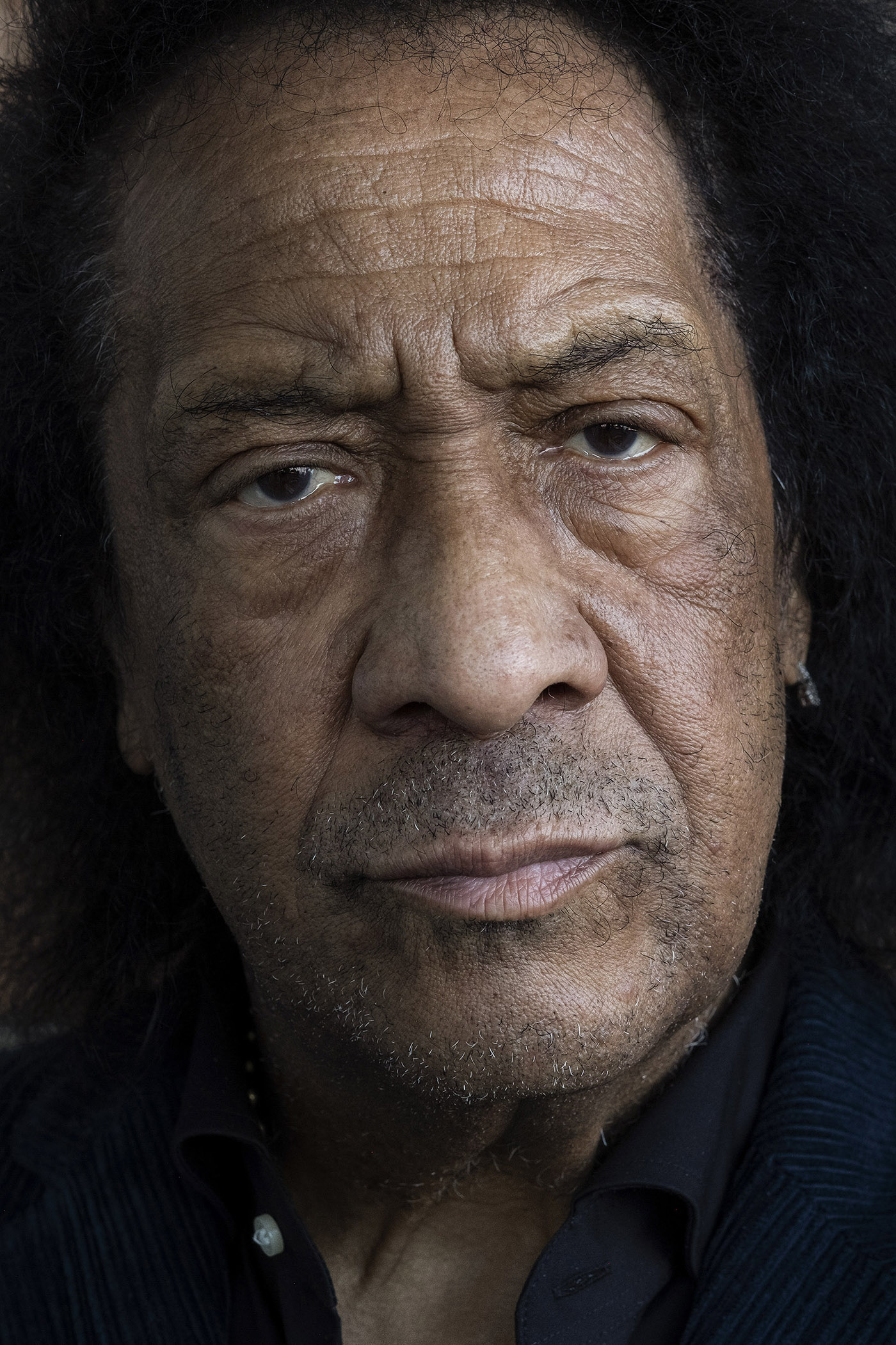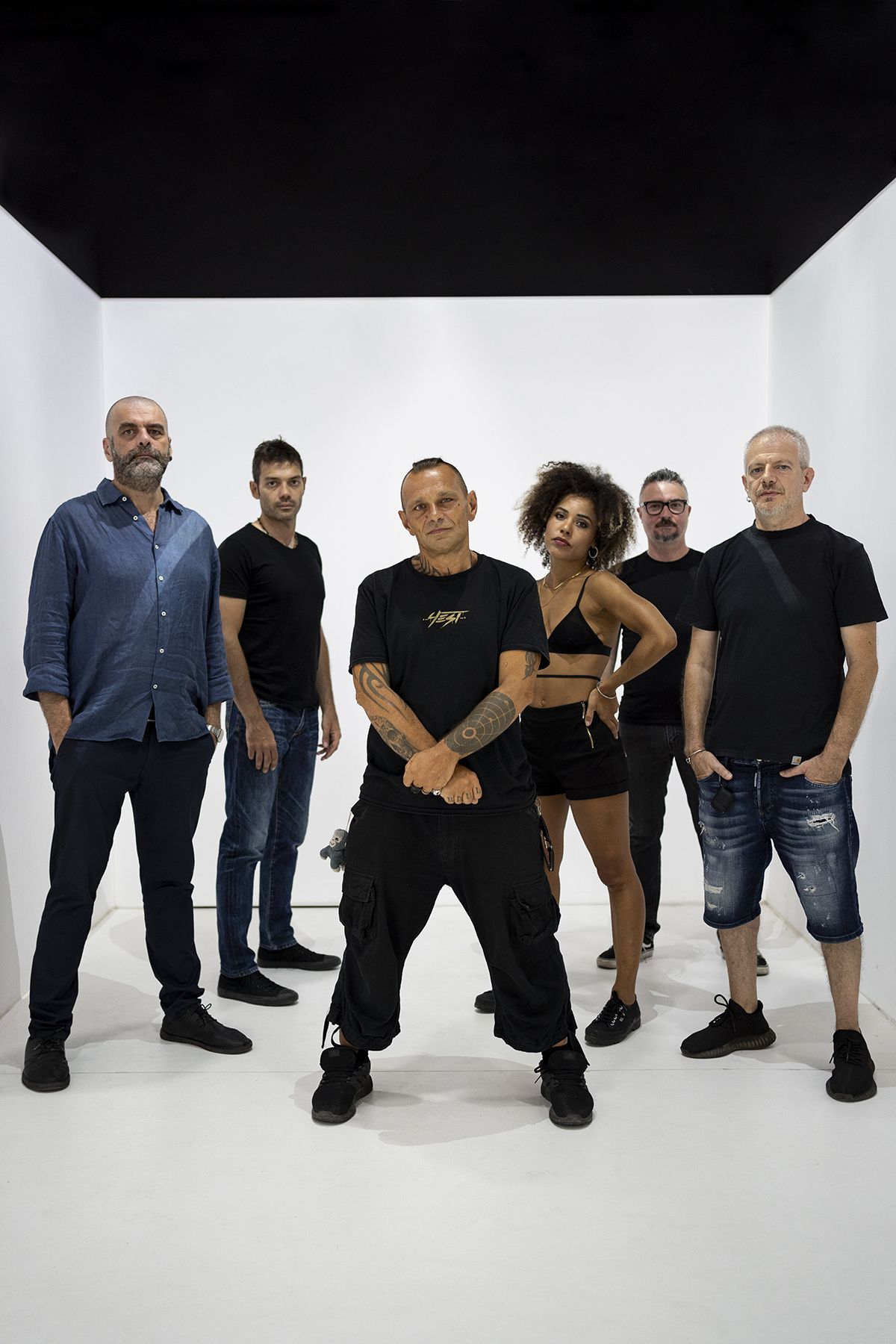You can easily make the case that the idea of shapeshifting is a consistent element that has been present throughout Joe Satriani’s incredible career which now stretches across 18 studio albums and nearly 35 years. Never one to make the same type of record twice, the symbiotic relationship that he has with his existing body of work and how it feeds into the next chapter that he’ll add to is a fascinating one.
While some artists are often reluctant about looking back, Satriani sees it as an important part of the process. “Each album is to a large degree, informed by what just happened the last two years,” he says. “The previous record, the cathartic experience of dreaming it up, writing it, recording it and then taking it on tour -- that is quite an experience.”
Returning home at the end of that cycle, the prolific guitarist finds himself right back at the beginning, considering what his next move will be. “There are two things that always seem to pop up. One is that you want to do it again somehow and the other is that you’re kind of running as fast as you can in the other direction,” he explains. “It’s some sort of bizarre artistic response to something that you’ve just finished. Whether it’s successful or not, you just can’t help but say, ‘Now, I’ve got to do something entirely different.’”
Shapeshifting, his 18th studio album, grew out of a plan to focus on the idea of changing as the central theme. Listening to the initial demos that he had recorded, he thought the “shapeshifting” phrase is one that would fit well with the songs that he had come up with. “I started to think that that sounds like 15 different guitar players,” Satriani says. “I know it’s the same guy, because it’s me, but it sounds like I’m really moving into an area where each melody requires me to almost be somebody else.”
He enlisted a wide range of collaborators, both old and new, to help him bring the songs to life. Legendary drummer Kenny Aronoff (John Fogerty), bassist Chris Chaney (Jane’s Addiction) and keyboardist Eric Caudieux were the core musicians on the new album with additional contributions coming from Lisa Coleman (The Revolution) and Christopher Guest.
Jim Scott (Foo Fighters, Red Hot Chili Peppers, Tom Petty & The Heartbreakers) co-produced the album sessions with Satriani. Longtime associate John Cuniberti was on board as well, handling the mastering duties.
The high energy title track, which leads off the album, opens with an explosive fill from Aronoff, joined quickly by Chaney who lays down an infectious groove as Satriani turns up his guitar and begins to play. In those early moments, they sound like a heavily caffeinated jazz trio, just jamming away. Even as the song continues to build, it maintains that initial foundation, capturing a feeling that will be familiar to anyone who has ever walked in on a band reaching that certain peak on stage at the corner club. It’s an exciting preview of the album that is ahead.
“I wanted the track to be an introduction to what was going to be a crazy ride, stylistically, emotionally, all of the things that I’m hinting at,” Satriani says. “It’s an album that has very strong themes from deep sadness and regret all of the way to just pure happiness and joy. I wanted it to be all there. But that song had to be there to show the shapeshifting process starting off.”
Both Chaney and Aronoff brought endless amounts of versatility and creativity to the project, qualities that were immensely important. Working with such a diverse set of songs, Satriani knew that he needed to assemble the right group that could handle anything. “When you’re faced with 15 completely different pieces of music, this huge variety of styles, you start to worry,” he admits. “It’s like, ‘Wow, who do I know who can play all of this stuff who is not going to insist on using their amp and always playing every song with their technique?”
He calls it a hunch, the idea that the pair, who he had worked with individually in the past, would mesh well together. “They knew each other and I think they may have done a couple of sessions together over the years, but I know that they hadn’t really sat down and done a real record together,” he says. “But right from the beginning, they just sounded amazing together.”
Choosing Jim Scott to record and mix the album was another leap of faith. Satriani picked up the phone and asked the veteran producer if there was any chance that he might want to work on an instrumental guitar album. Scott quickly and happily accepted the invitation, inviting the band to come and work at his studio in Valencia, California. “It’s such a beautiful and crazy looking place, just to walk in there everyday is wonderfully inspiring,” Satriani says, remembering the moment when they first showed up at the facility. “But for all of its craziness, it’s basically a very down home, back to basics analog studio with the right mix of vintage and digital gear to keep you inspired and capture you at your best.”
Scott’s easygoing manner brought good energy to the sessions and Satriani praises his ability to record and manage people, both individually and as a band, while keeping everything upbeat, happy and creative. His approach fit well with the way the guitarist himself likes to work. “I try to foster an atmosphere where everyone feels free to just say whatever they want,” he says. “I always feel that you benefit from somebody in the room saying, ‘That sounds funny to me, you should do it again.’ It’s always worth doing it, because they might be right.”
With the right team in place, Satriani and the band were able to focus in on capturing the right performances on the songs, which inspirationally, came from really interesting places. For example, “Ali Farka, Dick Dale, an Alien and Me,” puts Satriani conceptually out in the middle of the Sahara Desert, participating in a fanciful late-night jam with the pair -- and an alien.
Acknowledging that Ali Farka Toure and Dick Dale are perhaps unlikely collaborators, Satriani still saw a common thread. “These two guys are so different and yet, it’s all part of this unusual American experience of people having history from some other place and the music getting here and being reinterpreted somehow.”
The retro AOR feel of “Nineteen Eighty” finds Satriani spiritually revisiting the time period when he was working with his first band, the Squares. The future guitar hero the world came to know less than a decade later, would have to wait. He recalls that in those early days, they “dialed back the guitar solos and histrionics to try to create a cooler new wave vibe.” Decades removed from those goals, he was free to go forward and attempt to recapture what was on his mind in 1980.
Staying true to the sounds of the time, he even used a vintage MXR EVH phaser. “I’ve always been a huge fan of Eddie Van Halen,” Satriani says. “In my mind, he just crystallized that era. The late ‘70s and early ‘80s, he kind of saved rock guitar. So that’s what I would have been doing.”
The contemplative “All For Love” is one composition that actually dates back to the ‘90s and you can hear the roots of what it was originally conceived for -- a planned orchestral project that never came to be. In the years that would follow, Satriani’s thoughts would return to the piece from time to time and he finally decided to work to finish the song, which he had never played on guitar. The results are stunning and it’s hard to believe that it took so long for the track to find its way to the surface, but there are some complex reasons for that.
“Even though it sounds so easy, there are some high notes that no guitar player would ever want to have to play,” Satriani chuckles. “But I realized, ‘Boy, if I can pull this off, this is going to sound so emotional. It’s really going to be fantastic.’ I just put the work in and luckily we got a live performance one of the days that we were tracking and that wound up being 99% of that particular track.” The finished version of the song even keeps some of the “sci-fi soundtrack” keyboard sounds that were originally recorded in the ‘90s.
Longtime collaborator Eric Caudieux has a string of credits in the liner notes for Shapeshifting that only tell a small piece of the story in regards to the many roles he played. “On this record, he sat behind the funniest vintage keyboards and played for us. He’s playing a big Hammond organ, he’s playing little funky Radio Shack synthesizers. He’s doing all kinds of stuff, because we made him do it, mainly,” Satriani laughs, while noting that Caudieux is also an accomplished guitarist. “People don’t know that he plays guitar unless they saw him play on tour. He’s on the Live in San Francisco DVD playing keyboards and guitar. He’s a great guitar player.”
“He also has a really great ear for interesting sounds and how they’re going to fit together. He’s always an important part of the team for me,” Satriani continues. “Even if it’s just commenting on guitar performances. Sometimes I’ll give him eight performances that I did and I’ll say, ‘What do you think?’ With ‘All For Love,’ he said, ‘Man, that last one you did, that’s it. Just leave that alone!’ And I wouldn’t have thought that, unless Eric was there. I really trust him to point out that there was some magic on that that perhaps I missed because I was listening for amp hiss or something only a guitar player would worry about.”
Fans of Satriani’s more acoustic-based work will love the organic vibe that was captured on “Yesterday’s Yesterday,” the upbeat and free-spirited number which closes out the record, with guest appearances from Lisa Coleman on piano and Christopher Guest on mandolin.
Tapping Coleman was an idea that came from Caudieux, who had worked with her previously. He suggested that her style of playing would fit well with what Satriani was envisioning. “Prince and the Revolution, of course, everybody knows her from that,” he says. “But then once I started to listen to her own work, I realized, ‘Wow, she would bring something special to this that makes sense.’ She came by the studio to not only do that song but to also play on “Waiting” as well. Two completely different kinds of music, but she wound up giving us two really beautiful performances.”
Though he might be best known as an actor, Guest’s musical credentials go back to his high school days when he played mandolin with Arlo Guthrie, a fellow classmate, in their band at that time. Years later, when Satriani made a guest appearance with Spinal Tap, he would be astounded to discover how musically proficient they were. “Backstage watching Chris warm up, I realized, ‘Oh my God, this guy is a 100% solid musician,” the guitarist recalls. “He’s not an actor learning how to play the bits. He’s a total player.”
Listening to the sounds of whistling that they planned to place at the end of the song, Satriani found himself thinking of childhood memories and realized that they should place the whistling at the beginning of the song and they built an ambient introduction that would further draw out those feelings of childhood. “The noises that you hear along with the whistling actually came from my phone, a recording that I made in Molfetta, Italy, one afternoon walking through town,” he says. “We came upon a park that was alive with thousands of insects making the loudest racket you’ve ever heard in your life!”
To continue on that path, you’ll find a lot of different kinds of racket on Shapeshifting, which stands as one of the most interesting and intriguing records that Satriani has made to date. It’s one that effectively bottles the incredible journey that he took with his collaborators over the past year as they worked on music together. Listening back to the album, he’s quite pleased with what they have accomplished.
“I think that Jim and I were both feeling the same way that the performances and final mixes for Shapeshifting should be bold and dangerous. We should let the musicians breathe their own life into each part. Give them that freedom and let’s see where it goes. It really paid off.”
















